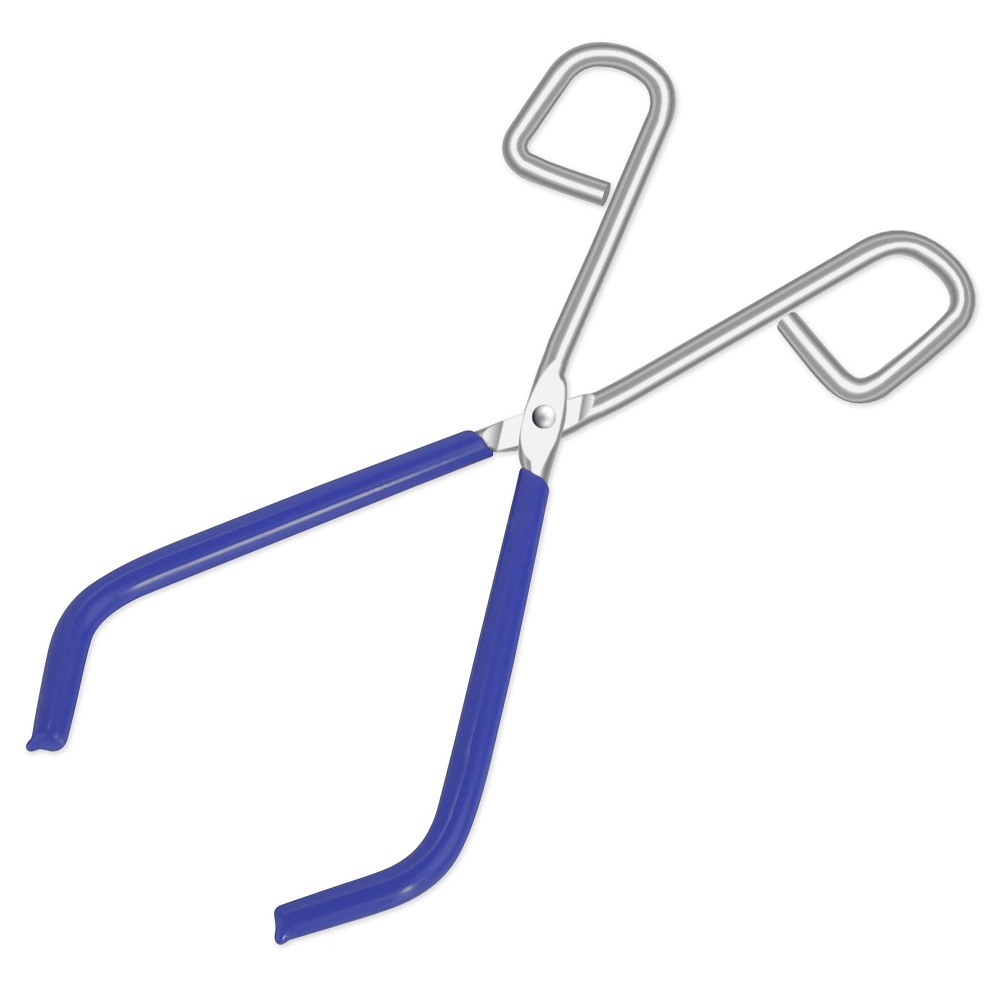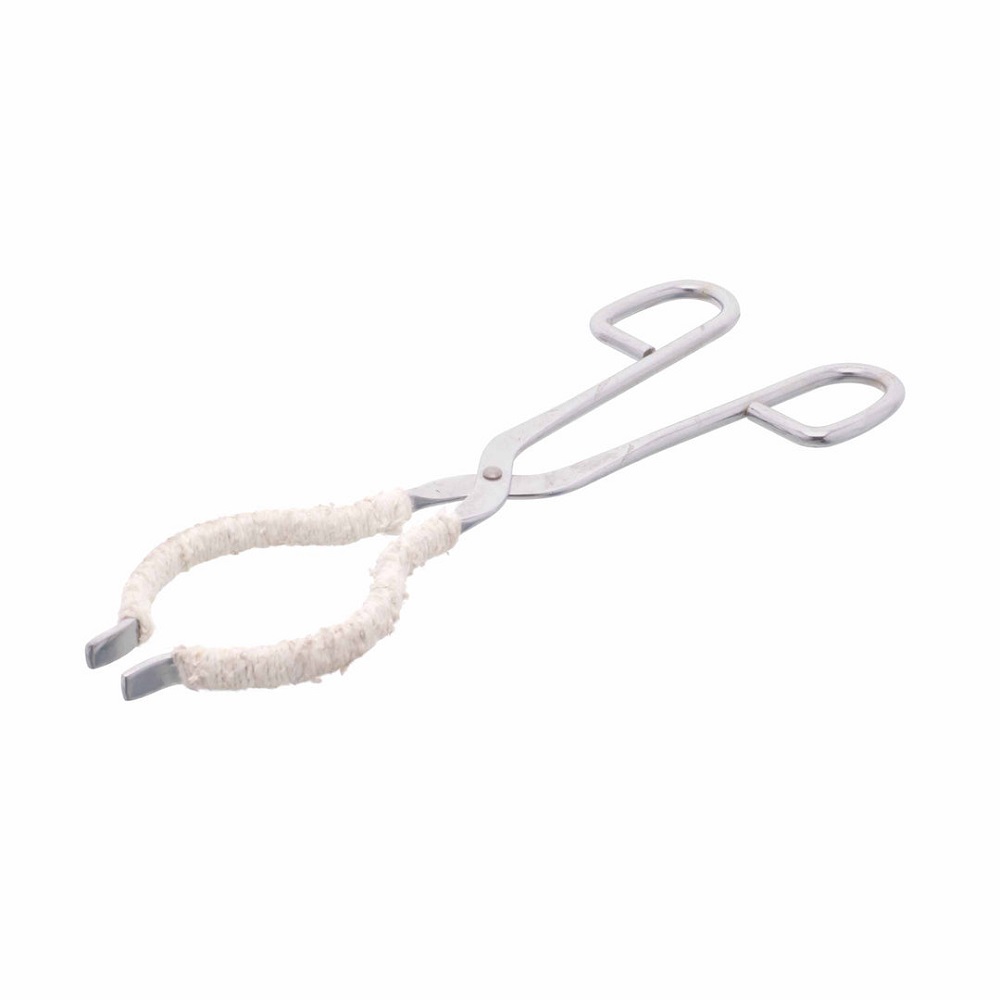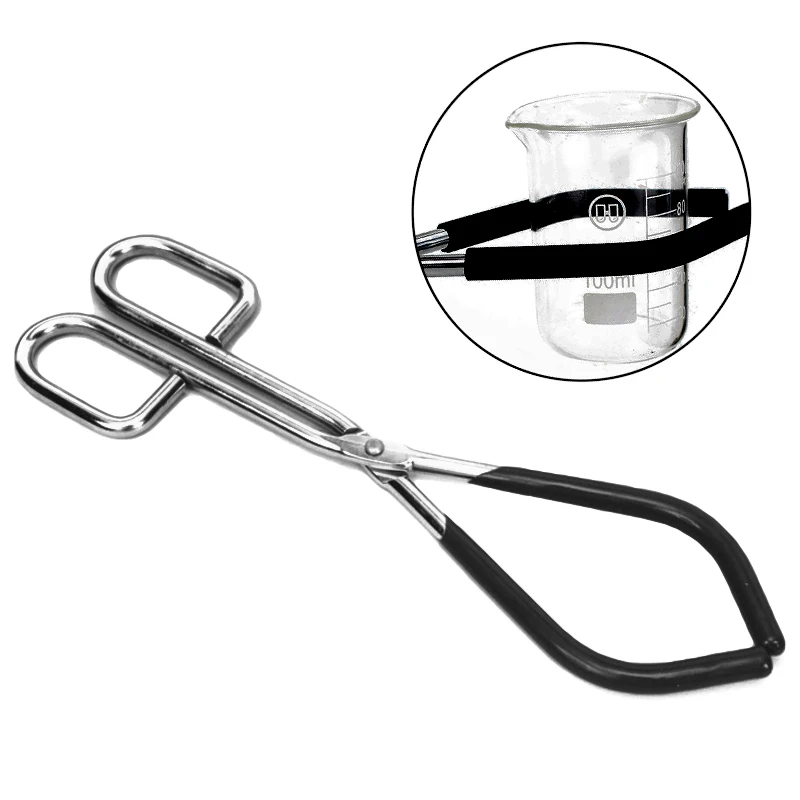Introduction to Beaker Tongs
Beaker tongs are crucial tools in any laboratory setting. They grip and move hot beakers, ensuring the safety and efficiency of handling these containers. Misuse or absence of beaker tongs can lead to accidents, contamination, and measurement errors. Thus, understanding the beaker tongs function is vital for anyone working in a laboratory.
Essential Laboratory Equipment: Beaker Tongs
Every lab needs beaker tongs. They are as important as test tubes and petri dishes. Made to handle hot glassware, they prevent burns and accidents. Without them, safe laboratory operations would be much harder to achieve.
Beaker tongs function by allowing technicians to move hot beakers without direct contact. This avoids the risk of burns or dropping delicate glassware. Their design usually includes features such as an insulated grip to ensure that even when beakers are heated to high temperatures, the handler remains protected.
Key Functions of Beaker Tongs
The primary role of beaker tongs is to safely handle hot beakers, which is a common task in many experiments. They provide a reliable grip, keeping both the lab technician and the materials secure. Additionally, these tongs help in maintaining the integrity of an experiment by avoiding direct contact that could contaminate the contents of beakers.
Selecting the correct type of beaker tongs for specific jobs is also part of their function. This ensures precision and safety, whether transferring liquids, heating substances, or carrying out chemical reactions. The beaker tongs function extends to supporting accurate measurements by preventing contamination from oils or substances on hands.

Different Types of Beaker Tongs
Beaker tongs come in many types for various lab tasks. Standard and specialized are the main categories. This helps labs pick the right tool for safe and precise operations.
Standard Beaker Tongs
Standard tongs are the go-to for most tasks. They have metal arms with a pivot near the handle. An insulated grip keeps heat away from hands. The tips usually clamp around a beaker’s neck. They often fit a range of sizes. This is for general use, not special tasks.
Specialized Beaker Tongs with Rubber-Coated Tips
Some beakers need more care. Specialized tongs have rubber tips to prevent slips. They are gentle on sensitive glass surfaces. This reduces the risk of breakage. Rubber-coated tongs work best for tasks needing extra grip. They come in handy for precise pouring and delicate operations. For labs dealing with volatile chemicals, these tongs offer a safer grip.
Material and Design Considerations
Understanding the material and design aspects is key for beaker tongs’ effectiveness and safety. These factors determine how well the tongs can handle heat and ensure a secure grip on beakers.
Common Materials Used in Beaker Tongs Manufacturing
Manufacturers typically build beaker tongs from metals that resist heat and corrosion. Stainless steel and nickel-plated steel are common choices. These provide strength and can handle high temperatures, making them ideal for use with hot beakers. Some tongs use brass, which is also durable and heat resistant. Rubber coatings may also be added for more secure handling.
Design Features that Enhance Safety and Efficiency
Safety in the lab relies on beaker tongs’ design features. Strong metal arms and pivoting mechanisms allow for easy picking up and securing beakers. Insulated grips protect hands from heat. Serrated or rubber-coated tips provide extra hold on the glass, reducing slip and breakage risk. The right design ensures technicians can carry out tasks safely and efficiently.

Safe Operation of Beaker Tongs
Proper use of beaker tongs is a must for lab safety. It prevents accidents and maintains the purity of lab work. This section covers the essentials for handling beaker tongs correctly.
Proper Handling Techniques for Beaker Tongs
When using beaker tongs, always grip them firmly. Make sure they secure around the beaker’s neck to avoid slips. Do not touch beaker tongs function areas with bare hands, especially after heating. Always place hot beakers on suitable surfaces to cool before handling further. Never use beaker tongs if they are damaged or have loose parts. Report any issues with beaker tongs to a supervisor immediately for safety.
Importance of Personal Protective Equipment (PPE)
While beaker tongs protect hands from heat, PPE adds another safety layer. Always wear heat-resistant gloves when handling hot beakers. Safety goggles are a must to shield eyes from splashes. Closed-toe shoes with non-slip soles protect feet if a hot beaker drops. Lab coats prevent harmful chemicals from reaching clothes or skin. Remember, using PPE along with beaker tongs enhances safety during lab work.
Application of Beaker Tongs in Lab Settings
Understanding how to apply beaker tongs is vital for any lab tech. These tools ensure safety and efficiency when dealing with hot glassware. They come designed to meet the specific needs of diverse lab tasks.
Handling Hot Beakers: Functionality and Safety
Beaker tongs function to move and pour from hot beakers safely. They protect against burns and spills during experiments. It is crucial to use tongs to avoid accidents with heated glassware. Their safety grips and heat insulation preserve both the user and lab work.
Using beaker tongs, ensure a secure grip around the top of the beaker. This prevents drops and potential breakages. Handling heated beakers directly is risky so beaker tongs are a must-have.
Specialized Tongs for Specific Laboratory Applications
Labs use special tongs for distinct tasks. For example, tongs with rubber tips are good for delicate glass. They help in preventing slips and providing a soft touch.
Some beaker tongs have extended arms. These are for dealing with beakers in deep heat sources. Others may be shorter for quick tasks under moderate heat. Choosing the right tongs means efficient, safe handling of lab equipment.
When working with beaker tongs, proper use is key. Make sure to match them to the right task. This ensures safety and accuracy in various lab applications.

Maintenance and Care for Longevity
Proper maintenance of beaker tongs is key to their longevity. Regular cleaning and careful storage prevent damage and contamination. By investing in the care of beaker tongs, labs ensure safety and efficiency for the long term. It’s crucial to maintain these tools in top condition.
Cleaning and Storage Recommendations
Keeping beaker tongs clean is straightforward. After use, brush off any debris. Wash them with soapy water if made of steel. Rinse well and dry immediately to prevent rust. Store beaker tongs in a dry place. Keep them away from chemicals that could cause corrosion. Proper storage ensures they are ready for the next use.
Recognizing When to Replace Beaker Tongs
Inspect beaker tongs regularly for signs of wear. Look for cracks, bends, or loose grips. If you spot damage, replace the tongs immediately. Using damaged tongs risks safety and could compromise lab results. Always have backups ready to maintain workflow and safety protocols.
Innovations in Beaker Tongs Design
The design of beaker tongs has seen great advancements. Today, they feature advanced materials and ergonomic designs. These developments focus on enhancing both safety and efficiency in laboratories.
Advanced Materials and Ergonomic Designs
Manufacturers now use new materials to make beaker tongs better. These materials can withstand more heat and last longer. This includes stainless steel and nickel alloys. Ergonomic designs make tongs easier to hold and use. They reduce strain on the hands during long lab sessions. Some tongs also have rubberized grips for comfort and better control.
Designers are focusing on user-friendly features. These may include curved handles to fit hand contours. Safety is also a key concern, so they add features like locking mechanisms. These prevent the tongs from dropping hot beakers unexpectedly. All these improvements make handling beaker tongs simpler and safer.
Impact of Innovative Designs on Laboratory Safety
Innovative beaker tongs designs have a big impact on safety. They provide secure handling of hot glassware, minimizing burn risks. The ergonomic handles and safety locks reduce the chances of accidents. With these features, lab technicians can focus more on their work and less on handling tools.
Such designs also help in upholding strict laboratory safety protocols. They make sure that all technicians, no matter their experience, can use the tongs safely. These designs are a step towards a safer and more efficient work environment in labs.
In summary, updated beaker tongs with new materials and designs are reshaping lab safety. They offer better grip, less risk of accidents, and a more comfortable experience for users. It’s important for labs to stay updated with these innovations for the best safety practices.
Conclusion and Handling Best Practices
As we close our comprehensive guide, let’s reemphasize the pivotal role of beaker tongs in laboratories. These tools may seem simple, yet they are fundamental for enforcing stringent safety measures and facilitating precision in experiments. By using beaker tongs function effectively, lab professionals can avoid burns, spills, and other accidents. Properly chosen and task-specific beaker tongs lead to streamlined lab operations, ensuring that activities run smoothly and safely.
Recap of Beaker Tongs’ Significance in Laboratories
Beaker tongs are not just a convenience; they are a necessity in the lab for handling hot glassware. They serve to protect users from heat, prevent contamination, and aid in accurate measurements. The importance of beaker tongs function can’t be overstated, as these tools are essential for maintaining a safe and effective laboratory environment.
Final Tips for Safe and Effective Use
When it comes down to using beaker tongs, remember these key tips:
- Always use beaker tongs when handling hot beakers to avoid burns.
- Choose the right beaker tongs based on the task at hand for precision and safety.
- Ensure beaker tongs are in good condition without any damage or wear.
- Clean and store beaker tongs properly after each use to prolong their life.
- Wear protective gear, including gloves and goggles, for additional safety.
Sticking to these practices will not only safeguard your wellbeing but also uphold the accuracy and integrity of your laboratory work. Incorporate these beaker tongs function tips into your daily lab routine for a safer and more productive workspace.
